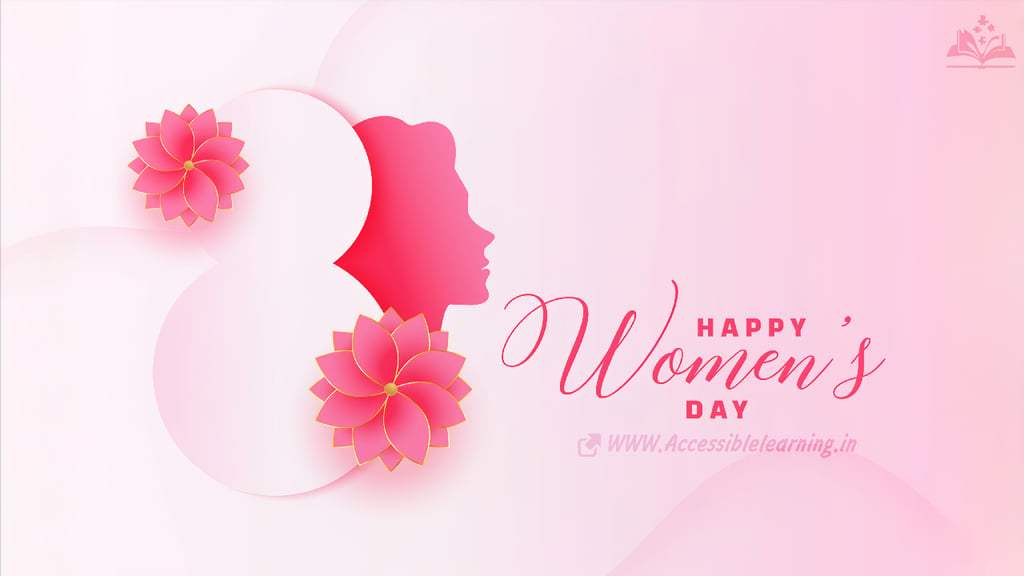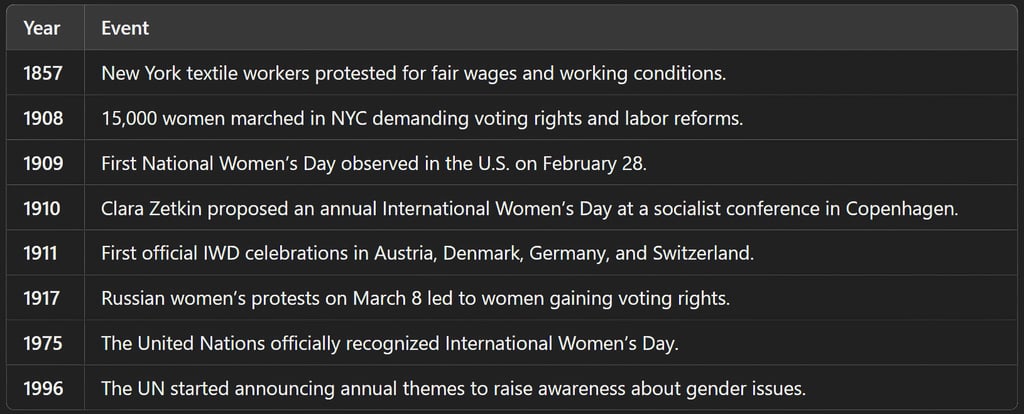
International Women’s Day: A Global Movement for Gender Equality
International Women’s Day (March 8) is a global celebration of women’s achievements and a call for gender equality. This article explores its history, significance, global celebrations, challenges women still face, and how individuals and organizations can contribute to gender equity.
EVENT/SPECIALCELEBRATION/FESTIVALSEDUCATION/KNOWLEDGE
Kim Shin
3/7/20254 min read


International Women’s Day (IWD), celebrated annually on March 8, is more than a symbolic date—it’s a global movement advocating for gender equality, women’s rights, and social justice. It highlights women’s contributions to society while addressing persistent challenges such as the gender pay gap, workplace discrimination, violence against women, and political underrepresentation.
This article will explore the history, significance, global celebrations, challenges women still face, and ways individuals and organizations can contribute to gender equality.
The History of International Women’s Day
The roots of IWD go back over a century, evolving from a labor rights movement into an internationally recognized day for women’s empowerment.
Key Historical Milestones of IWD




Why International Women’s Day Matters
Recognizing Women’s Achievements
Women have made groundbreaking contributions in science, business, sports, politics, and activism. Some influential figures include:
Marie Curie (Science): First woman to win a Nobel Prize in Physics and Chemistry.
Kalpana Chawla (Space Exploration): First woman of Indian origin in space.
Oprah Winfrey (Media & Philanthropy): A powerful advocate for education and women’s empowerment.
Angela Merkel (Politics): The first female Chancellor of Germany.
Mary Kom (Sports): A six-time world champion in boxing.
Addressing Gender Inequality
Despite progress, women continue to face discrimination in many areas:
Economic disparity: Women globally earn 20% less than men for the same work.
Underrepresentation in leadership: Only 10% of Fortune 500 CEOs are women.
Limited access to education: 130 million girls worldwide are out of school.
Gender-based violence: 1 in 3 women experiences physical or sexual violence.
Driving Policy and Social Change
IWD serves as a catalyst for governments, businesses, and NGOs to push for policy changes such as:
✅ Equal pay and employment rights
✅ Gender-inclusive education and healthcare
✅ Stronger laws against domestic violence and harassment
✅ Maternity leave and childcare support for working mothers
International Women’s Day Themes Over the Years
Each year, IWD is marked with a specific theme to guide global discussions and advocacy efforts.


How Different Countries Celebrate International Women’s Day
Global Organizations and the United Nations
The United Nations and World Economic Forum hold high-level panels, discussions, and events focusing on gender issues.
NGOs launch campaigns for women’s education, healthcare, and economic empowerment.
Country-Specific Observances
India: Events include gender equality summits, awards for women’s achievements, and protests against gender violence.
🇺🇸 United States: Women’s History Month is observed throughout March, recognizing female pioneers in history, business, and politics.
🇨🇳 China: Women receive half-day leave from work, and many employers give them gifts or bonuses.
🇷🇺 Russia: March 8 is a public holiday, with flowers and appreciation messages shared for women.
🇦🇷 Argentina: Large-scale marches against gender violence and inequality are held.
Workplace & Corporate Initiatives
Many companies support International Women’s Day by:
✅ Hosting women’s leadership conferences and mentorship programs
✅ Announcing diversity and inclusion policies
✅ Supporting female-led businesses and startups
✅ Conducting workshops on gender equality in the workplace


Challenges Women Still Face Today
Gender Pay Gap & Economic Inequality
Women earn less than men for the same work in most countries.
The burden of unpaid caregiving (housework, childcare) falls mainly on women.
Violence Against Women
One in three women faces physical or sexual violence.
In some countries, laws against domestic violence and marital rape are weak or non-existent.
Limited Access to Leadership and Politics
Only 26.5% of parliamentary seats worldwide are held by women.
Women are underrepresented in corporate boardrooms and decision-making positions.
Gender Bias in STEM and Technology
Women make up only 28% of STEM workers worldwide.
Tech industries often lack gender diversity and inclusivity.
How You Can Support International Women’s Day
As an Individual
Appreciate Women Around You: Celebrate the contributions of mothers, sisters, friends, and colleagues.
Speak Up Against Discrimination: Challenge sexist remarks, policies, and biases.
Support women-owned businesses: Buy from female entrepreneurs and startups.
Educate Yourself & Others: Read about women’s rights and gender issues.
As an Organization or Business
Promote Gender Diversity: Hire and promote more women in leadership roles.
Ensure Equal Pay: Conduct pay audits to close wage gaps.
Invest in Women’s Education & Training: Provide scholarships, mentorship, and career growth opportunities.
Implement Workplace Policies: Strengthen anti-harassment and parental leave policies.
International Women’s Day is not just for women—it’s for everyone. Achieving true gender equality requires action from governments, businesses, and individuals.
💜 Let’s celebrate women, challenge discrimination, and build a more inclusive world—not just on March 8, but every day!
🚺 Happy International Women’s Day! 🎉🌸
Subscribe To Our Newsletter
All © Copyright reserved by Accessible-Learning Hub
| Terms & Conditions
Knowledge is power. Learn with Us. 📚


